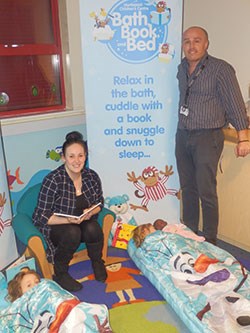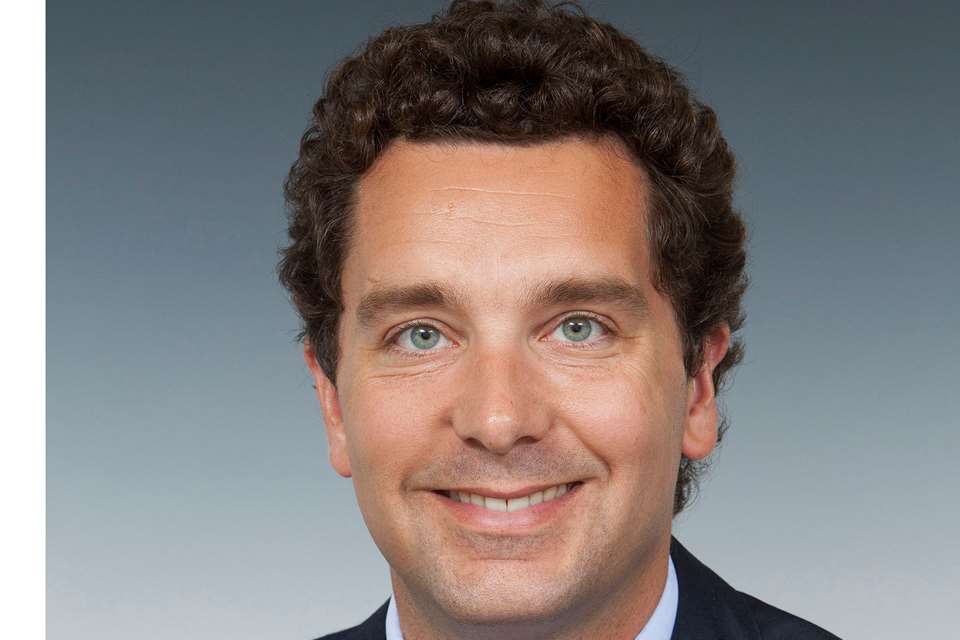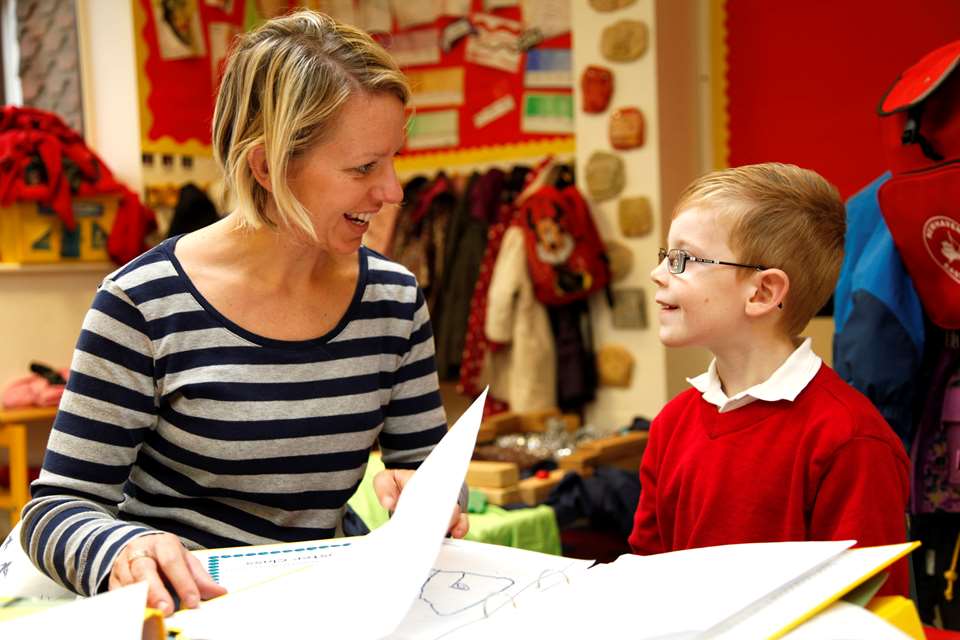Nursery Management: Closing the Gap - Bridge building
Charlotte Goddard
Monday, March 20, 2017
Why are some councils tackling the attainment gap in the early years between disadvantaged children and their better-off peers while others are not? Charlotte Goddard reports

How is it that in 2017, children are still being disadvantaged because of their parents’ income? Specific ethnic groups may have benefited from interventions to narrow the attainment gap over the past 25 years, but overall the gap persists. Poor children lag behind their better-off peers by nearly three years in reading, maths and science at 16 years old, according to recent research by the Sutton Trust.
This is despite a slew of national policies including the Pupil Premium, which is focused on improving the attainment of disadvantaged children. Two-year-olds from worse-off families are also given free childcare, a scheme introduced under the 2010 coalition government in an attempt to improve school-readiness.
Traditionally independent services such as health and early years are being encouraged to think and work collectively to support disadvantaged children through initiatives such as the Integrated Review, designed for early intervention. The Centre for Excellence in Information Sharing, a government-funded team based at Leicestershire County Council, is one of the initiatives that have been set up to encourage such multi-agency working.
Yet the attainment of disadvantaged children is still a ‘postcode lottery’. While areas such as Hartlepool and Southend have succeeded in reducing the gap at age five by up to nine percentage points, according to Ofsted figures, there are 44 local authorities for which the gap has actually increased. In Blackburn with Darwen in Lancashire, the gap has widened by 10 percentage points.
Ofsted reports that in areas failing to close the gap, local authorities and health professionals are often not clear about who is accountable for improving the rate of development of children in deprived areas. The inspectorate also says there is not enough shared strategic planning in these areas, and there is too little accountability to check that information-sharing and interventions are effective in reducing the impact of disadvantage early enough. Of course, this is against the backdrop of continued austerity: Blackburn local authority announced it had to cut 500 jobs last year to save around £13m.
BEST PRACTICE
Southend-on-Sea was praised by Ofsted in its most recent annual report for reducing the attainment gap at the age of five by nine points, from 24 percentage points in 2013 to 15 in 2015. All of its pre-schools, 96 per cent of nurseries and 97 per cent of childminders are currently rated Good or Outstanding. As a result, 96 per cent of the borough’s funded two-, three- and four-year-olds attend Good or Outstanding provision.
Brin Martin, director of learning at Southend-on-Sea Borough Council, says it is essential to tackle the attainment gap early. ‘A co-ordinated approach is needed to close the gap in development between children from low income families and their peers. This must ensure that children most in need of high-quality early education are able to access it,’ he says.
Much research has shown that attending high-quality early years provision boosts later attainment for disadvantaged children and that well-qualified staff, who tend to have higher quality interactions with children, are key to this.
Southend has worked with the local early years sector to improve provision through initiatives such as joint training. Local childcare networks allow different types of providers, including schools, to learn from and support each other. The council has also partnered with local trainers to improve qualifications.
‘Providers were saying that students came out of further education with qualifications which were not fit for purpose, still needing basic child development information, even at degree level,’ says Elaine Hammans, early years quality and performance manager at the council. ‘We worked with Southend Adult Community College to develop bespoke modules to add to qualifications. We have tried to home-grow our early years graduate leaders.’
A dedicated website allows early years providers to access information on training, policies and news. ‘Ofsted only inspects every three years or so, and we feel it is important to ensure quality is kept up between those times, through continuous professional development,’ says Ms Hammans. The effects have been felt: all but one setting in the borough now has a manager qualified to level 4 or above.
The council uses a data-led approach to improve attainment among disadvantaged groups. ‘We try to identify areas for development by looking at the EYFS data, focusing on specific groups, such as boys, who continue to underachieve,’ says Ms Hammans. ‘We also listen to what providers are saying. We have a very committed workforce, and more than 100 providers regularly attend meetings and training after a long day at work.’
MULTI-AGENCY WORKING
Southend also sees multi-agency working, particularly between health and early years, as key to supporting disadvantaged children. ‘The health services have earlier access to children than early education. When we looked at the issues causing the attainment gap, we realised it is about how we work with whole families,’ says Ms Hammans.
Councils across the country are axing their children’s centres, but Southend is committed to retaining them, despite a 28 per cent cut to its budget last year. The borough recently brought its nine children’s centres, previously run by separate organisations, together into a network run by the charity Family Action, so services could be delivered consistently. Family Action already ran an Outstanding children’s centre for the council.
‘Apart from under the most exceptional circumstances, we will never close a children’s centre, they are the absolute jewel in our crown,’ says Mr Martin. ‘They are a one-stop shop for parents,’ adds Ms Hammans. ‘For example, we hold antenatal classes in the children’s centres, in partnership with midwives, which include information on child development as well as what happens during birth.’ The classes empower parents to put the foundations in place for later learning, for example giving information about speech and language development. Early years and health visitors also work closely together on the integrated checks that take place at two and a half years.
Children’s centres in Southend also receive information on local births, so they can promote their services where they are needed. This informationsharing is key to supporting disadvantaged children from birth, but it is an arrangement each local authority has to make individually.
Calls for a national arrangement with NHS England, whereby birth information is automatically shared with children’s centres, were thought to have been answered when it was announced in Nursery World last year that some funding had been allocated to take this forward.
However, work on this has now been subsumed into the Child Health Digital strategy, which was published last year, and local authorities will have to continue to make their own arrangements for information sharing for the foreseeable future.
HARTLEPOOL
 At the other end of the country, Hartlepool reduced the attainment gap between disadvantaged five-year-olds and their peers by ten percentage points between 2013 and 2015. The local authority was aware that the gap between local children eligible for free school meals and their peers at Key Stage 1 was bigger than the national average. So its children’s services department set up the Hartlepool Education Commission in February 2014, which came up with a number of recommendations that are being put into practice across the council, such as that schools should commit to stronger relationships with early years providers.
At the other end of the country, Hartlepool reduced the attainment gap between disadvantaged five-year-olds and their peers by ten percentage points between 2013 and 2015. The local authority was aware that the gap between local children eligible for free school meals and their peers at Key Stage 1 was bigger than the national average. So its children’s services department set up the Hartlepool Education Commission in February 2014, which came up with a number of recommendations that are being put into practice across the council, such as that schools should commit to stronger relationships with early years providers.
The commission also highlighted children’s language development as a key area to focus on in order to close the attainment gap, and said tackling this issue would require an integrated approach across the health, social care, education and early years workforces. In response, the council developed a ‘Talk Matters’ project in collaboration with schools and early years settings. Launched in autumn 2016, the project provides specialist training and support to schools and childcare providers to help improve children’s early language and literacy skills. In the longer term, this will be rolled out to support the wider children’s workforce.
Another key aspect of the project will be to encourage parents to support their children’s early language development from birth onwards through a range of initiatives. The council recently launched ‘Bath, Book and Bed’, a year-long campaign that is being co-ordinated by local children’s centres. Throughout 2017, there will be a different bedtime story theme each month, promoting activities to encourage good bedtime routines and a love of reading.
‘This scheme presents a great opportunity to support parents in having good bath, book and bedtime routines which can help develop vitally important language skills in readiness for their children going to nursery and school,’ comments Councillor Alan Clark, chair of Hartlepool Council’s Children’s Services Committee.
‘Language is the foundation for the development of literacy skills. Sharing a book with a child regularly from birth plays an important part in their development of these important life skills.’
FURTHER INFORMATION
Unknown children – destined for disadvantage? Ofsted, July 2016. Includes a table showing how the gap between disadvantaged children and their peers at age five has changed between 2013 and 2015, https://www.gov.uk/government/publications/helping-disadvantaged-young-children-ofsted-thematic-report
Ofsted Annual Report 2015/16. Ofsted, December 2016. The chapter on early years contains information on the attainment gap, and what more needs to be done to tackle it, https://www.gov.uk/government/collections/ofsted-annual-report-201516
Ofsted’s 2015 early years report, https://www.gov.uk/government/uploads/system/uploads/attachment_data/file/445730/Early_years_report_2015.pdf










